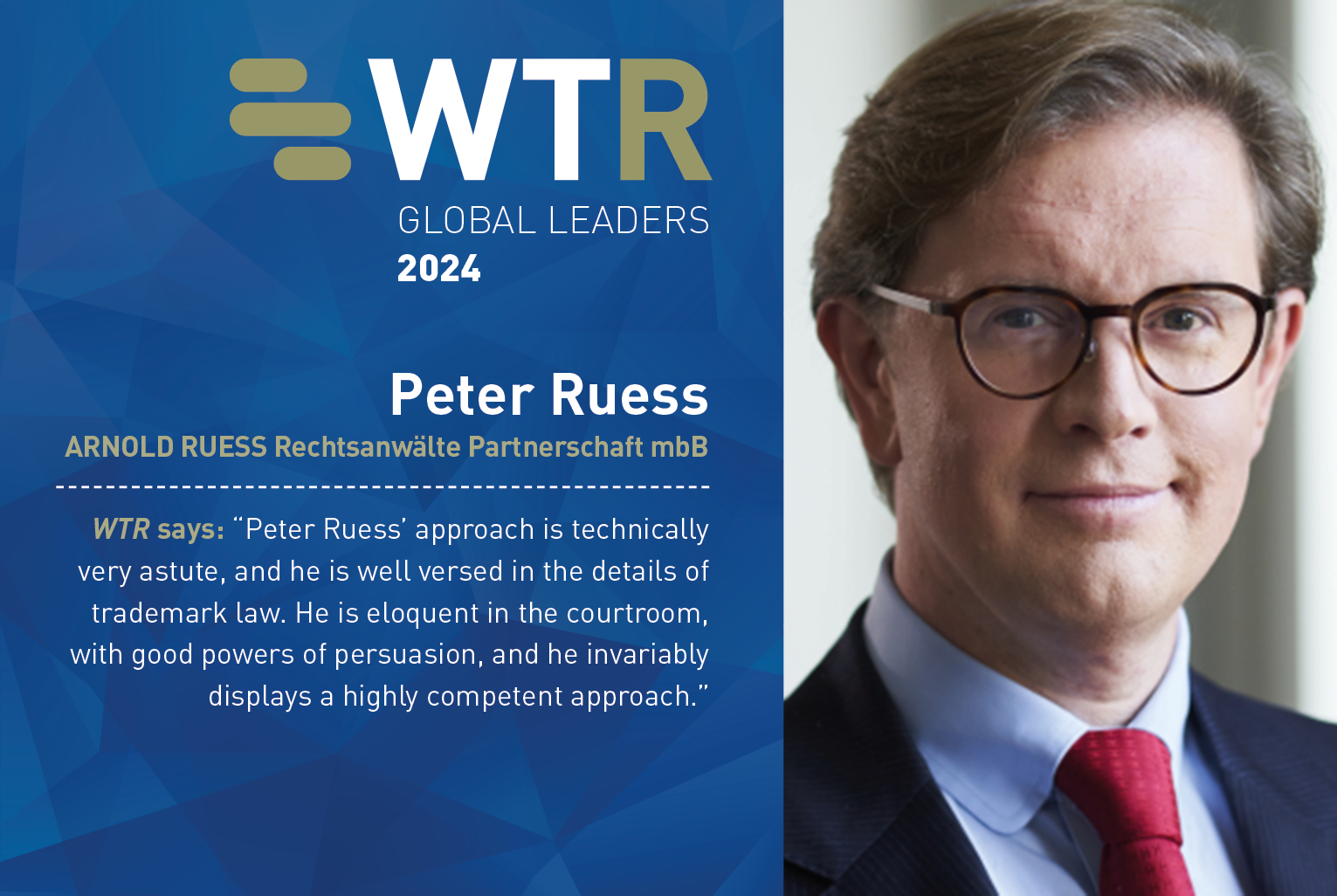Peter Ruess

What is your take on the proposed shift in the EUIPO’s role when it comes to intellectual property (ie, its growing involvement in SEP issues)? Do you have concerns about how this might affect the trademark sphere?
The EUIPO’s role in the SEP regulation is unfortunate and has been rightfully met with widespread criticism from prominent expert voices, including even the president of the UPC and president of the EPO. Experts have pointed out that, inter alia, this role shift effectively means impairing proper access to justice. It is unclear why SEP owners can bring infringement actions say in the United Kingdom or China, while not being afforded the same rights in the European Union. Despite all of this, the effect on trademarks will most likely only be very indirect, as the EUIPO might divert time and resources from the trademark field to embark upon this new territory.
How can rights holders use different IP rights (eg, trademarks, design rights) to protect their brands in Germany?
A great question. It is important to view a product as a whole. IP rights have different functions – a shape can be a source identifier (a 3D mark) or a protected design, or both. The interplay is relevant. In my experience, a useful approach is to sit down with marketing and find out what the product is about, how it is communicated and what makes people buy it. That helps to define the elements worthy of protection and align those with the IP rights that fit best.
Clients need to combine whatever rights are reasonable and try to monopolise the product in whatever way legally possible and reasonable. In this context, patent protection should not be overlooked. Often, patents carry new inventions to market, but a trademark is there long after the patent expired – take Nespresso capsules, for example.
However, if these capsules had not been merely named "capsules" but been given an arbitrary name, the Nestlé footprint in the business would probably be even more substantial and third-party offers would have been tougher to market. A good trademark strategy includes crafting new vocabulary for new products; this is more work, but much more rewarding than just dealing with minimal alterations to descriptive terms that then must be defended in court at great cost and risk.
As an example, I am lucky to have a client that allowed me to create word marks for its products – namely for an audio device for children that plays music or tells stories once the user places a figurine atop it. The client liked the names, and so the Toniebox and the Tonies were born. These very successful products have been sold millions of times and would certainly have done so without my – or any lawyer's – involvement. Still, the ‘Tonies’ versus ‘capsules’ strategy highlights that it is harder for copycats to get into a product category where the products have protected names instead of generic terms.
How has your membership with organisations such as AIPPA, INTA and AIPLA contributed to your professional development?
Intellectual property is an international field. Interacting with practitioners from other countries is crucial. Our law firm serves significantly more non-German clients than national ones. An international corporation’s issues require us to think beyond borders. Regular meetings, presentations and discussions with colleagues, judges and academics from other countries help to facilitate that goal.
It is, of course, also rewarding on a personal level. I did a postgraduate degree in the United States and have many international friends from that time, with some of whom our firm also works. INTA, for example, is a meeting point for anybody around the world, whereas AIPLA is the must-attend event for US practitioners.
What recent decisions or legislative developments are having the biggest impact on trademark strategy in Germany right now?
There are many cases, and the question of the most important one hinges on what your actual desk looks like. For me, one of the most interesting decisions was in Louboutin v Amazon, which, in a nutshell, provided for direct liability of certain providers for trademark infringement on their platforms. Based on this, our trademark team has achieved three preliminary injunctions against two different platforms at the Düsseldorf Regional Court, extending this rule to design violations. This is potentially changing the way that platforms conduct their business. However, no decision is final yet and we will see appeals and proceedings on this before we see settled case law.
Peter Ruess
Partner
[email protected]
Peter Ruess is a partner at Arnold Ruess and a professor of law at the International School of Management in Dortmund, Germany. He has authored and co-authored more than 70 publications and represents mid-sized to large corporate clients in trademark and unfair competition matters. Prof Dr Ruess studied law in Bayreuth, Vienna and Washington DC, where he obtained an LLM in IP law and interned with the US Court of Appeals for the Federal Circuit.